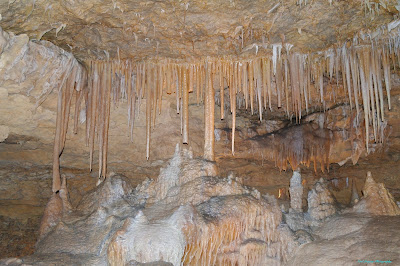Robe is a pretty seaside town with old world charms and with a population of about 1200 people during the off season. Many of the older buildings along it's one main street are of stone construction and with most having verandahs. Away from the CBD area there are many new and modern homes. Some of these homes seem to be holiday homes, maybe owned by people from Adelaide as many seem vacant.
They think they are something special here at Robe, our un-powered site here is $32 per night. The site here looks spacious but we are really spread over two sites.
The 'Obelisk' here is a sighting beacon and is lined up with other points further inland to gain safe entry to the port. I can't tell you much about it because the information board is grossly faded by sun and probably salt spray from the waves crashing below. The Obelisk will not be here for perpetuity as it's foundation is being eroded by wave action on the right hand side.
There is an extensive and modern marina at Robe. There are many empty berths at this time of year but come holiday time I would assume that the picture would be very different.
The Robe Hotel is typical of the type of construction employed by most of the buildings in the CBD Precinct.
Opposite the Robe Hotel is the main beachfront with it's avenue of Norfolk Pines.
Around the point is The Long Beach with the SeaVu Caravan Park perched on the point. This CP is very exposed to the elements, the view might be grand but if the wind was blowing hard it would be very unpleasant indeed.
A general view down the Main Street of Robe from near the Information Centre.





















































